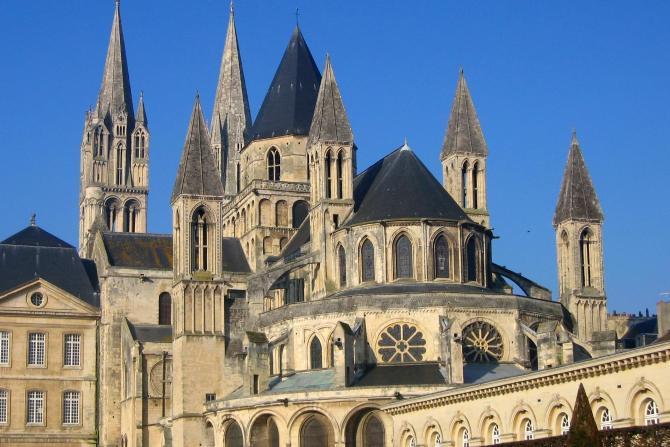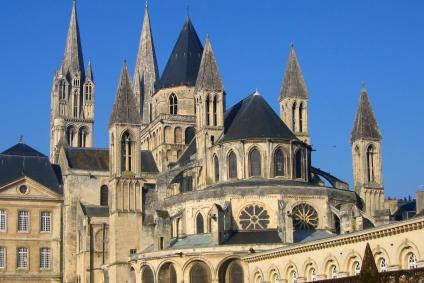The Abbey of Saint-Étienne,
located in the French city of Caen, is a former Benedictine monastery dedicated
to St. Stephen. Also called the ‘Men's Abbey,’ it lies to the west of the Caen
Castle, while a ‘Ladies' Abbey’ lies to its east. It was founded in 1063 by
William the Conqueror, the then Duke of Normandy and the soon-to-be King of
England. The site is one of the most notable Romanesque buildings in the
Normandy region of France. Built in Caen stone, some of the church’s Romanesque
elements were replaced by the Gothic in 1166. Its Romanesque apse became a
Gothic chevet along with the addition of rosette windows and flying buttresses.
Even the interior vaulting was changed from sexpartite to quadripartite. In the
13th century, nine towers and spires were added to the church. It
also features a ribbed vault.
In the 16th century,
the high lantern tower in the middle of the church was collapsed due to the
French Wars of Religion. Even though William was initially buried in the
church, his tombstone of black marble was destroyed in the war. Towards the
end, only a single bone of his leg was preserved, which was later buried in the
church once again. During the Normandy Landings of World War II, the church became
a refuge for inhabitants. The people put up a red cross made from blood on the
roof of the building to indicate that the site was a hospital, which helped in
preventing bombings.









